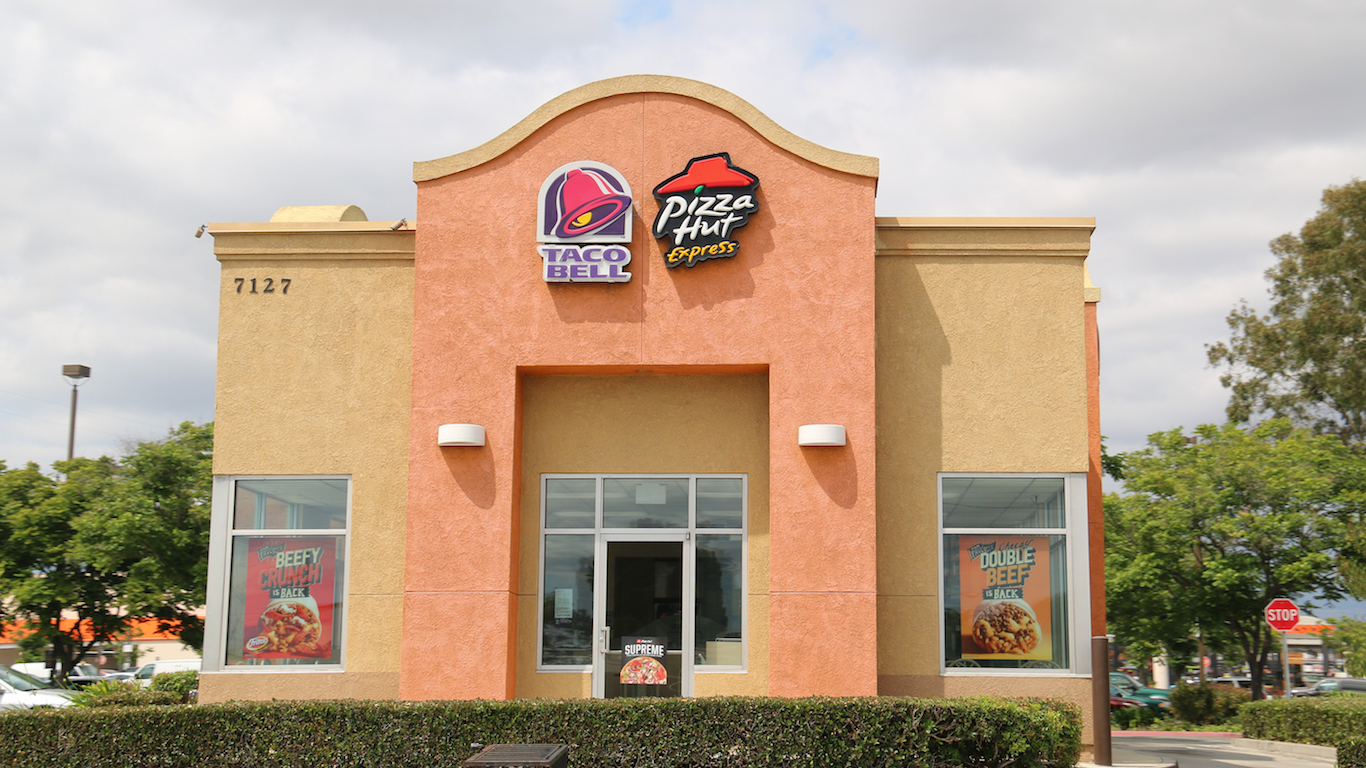Retail
Will Yum Brands or Yum China Outperform Into and After a China Trade War Agreement?

Published:
Last Updated:

Sometimes there are great opportunities when companies announce spin-offs in their strategies. One very prominent spin out was the Yum! Brands Inc. (NYSE: YUM) exit from the Yum China Holdings Inc. (NYSE: YUMC). The move allowed investors a chance to buy the direct China play if it wanted to, or it could buy the U.S.-themed Yum that also gets a royalty payment from those sales in China.
With the outcome of a trade war expected to come in the next four weeks to eight weeks or so, some of the long-term investors have to be wondering “which Yum will be the yummiest” if a trade deal is reached. Unfortunately, it may be where neither company is deemed all that attractive to the investing community based on the price changes that have already been seen.
24/7 Wall St. has tracked recent share gains, compared them to Refinitiv consensus estimates and added other historical data to break down the opportunity and risk for how each might come out if a deal is reached in China.
The performance on each company has been rather mixed for 2019. It seems obvious that the “trade deal gets done trade” camp is betting that it will be better for the Chinese version of Yum than if not. The logic is simple enough, with a “deal” meaning that sentiment against American brands in China might not be as bad as relations begin to normalize. Then again, the “non-China version” of Yum Brands is more or less a pure-play for North America and regions outside of China that still gets a relatively free royalty payment from Chinese sales.
Yum China came out as its own incorporated company in 2016, long before there were any issues concerning tariffs and trade wars. Its shares were last seen trading up almost 35% year to date, but that is a gain of just 12% from this time a year ago from when trade woes were front and center. At the end of 2018, it operated approximately 5,900 KFC restaurants and it also had 2,200 Pizza Hut with some additional chains under different names in China.
The company’s 2018 annual report confirmed that Yum China pays a license fee to Yum equal to 3% of net system sales from both company-owned and franchise restaurants, but it owns the intellectual property of brands like East Dawning, Little Sheep and COFFii & JOY and it pays no license fee related to these concepts. Yum China also says that it is the largest restaurant brand in China with over 8,400 restaurants and with $8.4 billion of revenues at the end of 2018.
Yum China was last seen down 2.2% at $44.25, with a 52-week range of $30.10 to $46.19, Its consensus analyst target price was $44.65 and it had close to a $17 billion market cap. It pays only a 1.1% dividend yield.
Yum Brands was last seen underperforming its China trade by trading up just about 12.4% so far in 2019. Still, it has outperformed Yum China with a gain of about 19% from this time a year ago.
As of December 31, 2018, Yum Brands counted some 22,621 KFC units, as well as 18,431 Pizza Hut units and 7,072 Taco Bell units in approximately 140 countries and territories. Its 2018 revenue was almost $5.7 billion in 2018 and that had declines for three consecutive years after breaking out the prior China numbers.
Yum Brands has a market cap of $31.5 billion, and the shares were last seen down just 0.1% at $103.22. Its 52-week range is $77.09 to $103.43, and the consensus analyst target price was $99.19. It pays closer to a 1.65% dividend yield.
With both stocks up, Yum outperforming versus a year ago but Yum China outperforming so far in 2019, maybe the good news has been factored in after looking at the consensus analyst price targets and trading history. Maybe Yum should consider a similar strategy for other regions if it wants to change is fortunes — assuming other chains don’t eat up more market share. And sometimes value investors look for value and have a hard time finding it.
If you’re one of the over 4 Million Americans set to retire this year, you may want to pay attention.
Finding a financial advisor who puts your interest first can be the difference between a rich retirement and barely getting by, and today it’s easier than ever. SmartAsset’s free tool matches you with up to three fiduciary financial advisors that serve your area in minutes. Each advisor has been carefully vetted, and must act in your best interests. Start your search now.
Don’t waste another minute; get started right here and help your retirement dreams become a retirement reality.
Thank you for reading! Have some feedback for us?
Contact the 24/7 Wall St. editorial team.